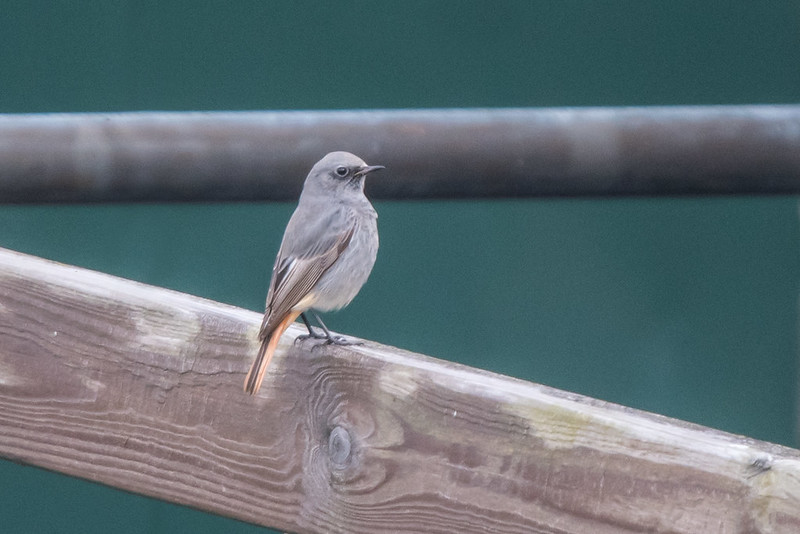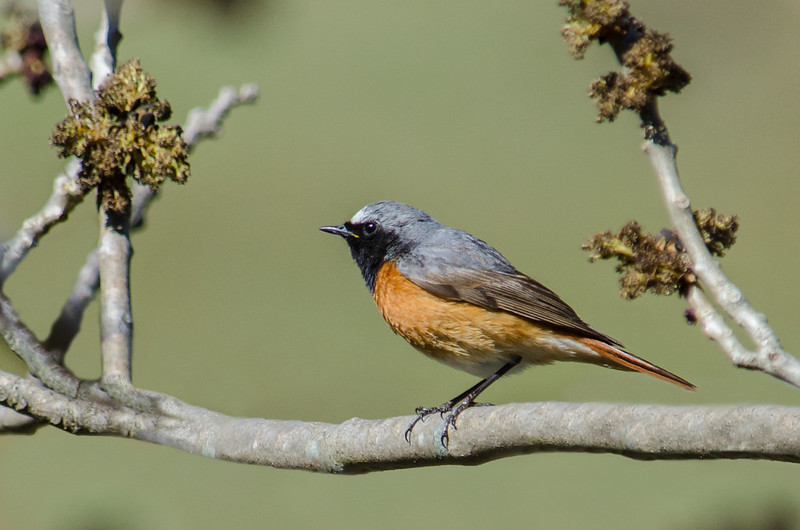
The Black Redstart is a common breeding bird in much of continental Europe and it often nests in towns and villages. It, like the more familiar Common Redstart, is a hole-nester. Common Redstarts nest in holes in trees whereas Black Redstarts often nest in holes in building and walls.
In the UK Black Redstarts are uncommon as breeding birds but are found nesting in London, even central London, and that’s the main reason it is featured here today, as it is a species that those locked down in our capital might well hear during this period.
It is said that Black Redstarts colonised London after WWII and started nesting in amongst the rubble of bomb sites created during the Blitz.
I’ve heard Black Redstart song in Cavendish Square (just north of Oxford Street), by the Royal Society (in Carlton House Terrace), in The Strand (outside the Royal Courts of Justice) and singing from the roof of King’s Cross Station.
I remember the King’s Cross bird well because I had travelled down to London late in the evening and checked in to the Great Northern Hotel ahead of a day of radio interviews starting with 5Live morning drivetime show and the Today programme. I only had a few hours sleep and woke at 330am through a combination of nerves and the sound of a singing Black Redstart. I listened to the bird sing for well over an hour while gathering my thoughts for the day ahead.
This is what they sound like:
And here is a UK recording from London from the Olympic Park in Stratford;
It’s a simple jangling song, but if you hear it in London then you are having quite a treat.
And I’ve chosen it for this blog post because I am thinking of all those locked down in big conurbations, London in particular, with less access to green space than those of us lucky enough to have gardens and access to the countryside. The Black Redstart is a bird you might hear in any year, but the quieter streets might make it much easier this year.

But while we are discussing the urban Black Redstart we should touch on the Common Redstart, most definitely a bird of woodland, but with a quite similar song. The Common Redstart has a slightly more melodic tuneful song, often starting with a musical note and also often has what seems like ‘an extra bit at the end’ compared with its relative the Black Redstart.
But, quite honestly, if you hear a song that sounds like some sort of redstart in the UK you’ll usually be right to look around you at the habitat and choose on the basis of how many houses and trees you can see; more buildings than trees – Black; more trees than buildings – Common.
[registration_form]
It’s the ubiquitous bird around our house in the Cevennes and the song we often wake to. We’re meant to be there from this week but of course we’re not, so hearing it (especially with that church bell) makes me sad. They’re lively birds and fun to watch, especially after we’ve been gardening. They nest around the house, sometimes rather too close to doorways and the like, though they seem to manage except when they fall down the chimney and need rescuing.
Lovely hearing the two restarts so close together, for the differences and the similarities. A great pleasure sitting in my shed with the rain tapping on the roof, and redstarts of both colours singing.
Thank you, Mark.
Terrible admission to make, but while I’ve still to see my first redstart I’m quite familiar with black redstarts (though not their song, I’m bloody terrible with birdsong). When I lived in Hungary there was a bar literally a few steps from the house I stayed in where you could sit in its garden and watch a pair of black redstarts flitting about, their nest must have been on the roof somewhere. Delightful experience watching them knowing they bred in Britain too, but they were rare so I was privileged – certainly raised my spirits when drinking bloody awful Hungarian beer. The other prize was the regular visits from the big and beautiful electric purple/blue carpenter bee. They too occasionally reach Britain and I believe bred in Nottinghamshire once. So much you wish would just make a concerted effort to skip over the Channel and become truly established here.
Similarly here, in the Minervois in Languedoc – but we got here just in time (Macron closed France while we were in the air !) an it is an interesting experience living through spring in just one area. Hoopoe wars in the garden have been a highlight – but I think they’ve sorted out who gets who & which territory now.
Its quite a while since I heard one sing in the UK. On Birmingham Town Hall one Sunday morning with Graham Appleton ( have a look at his Wader Tales Blog)way back in the mid seventies. In the late eighties with Pete Etheridge in Bowland two singing in Fog one April, one on Scout Rock, the other on Bullstones. I’ve heard them in Poland, Bulgaria and Spain since but those are the occasions that stick in my mind.